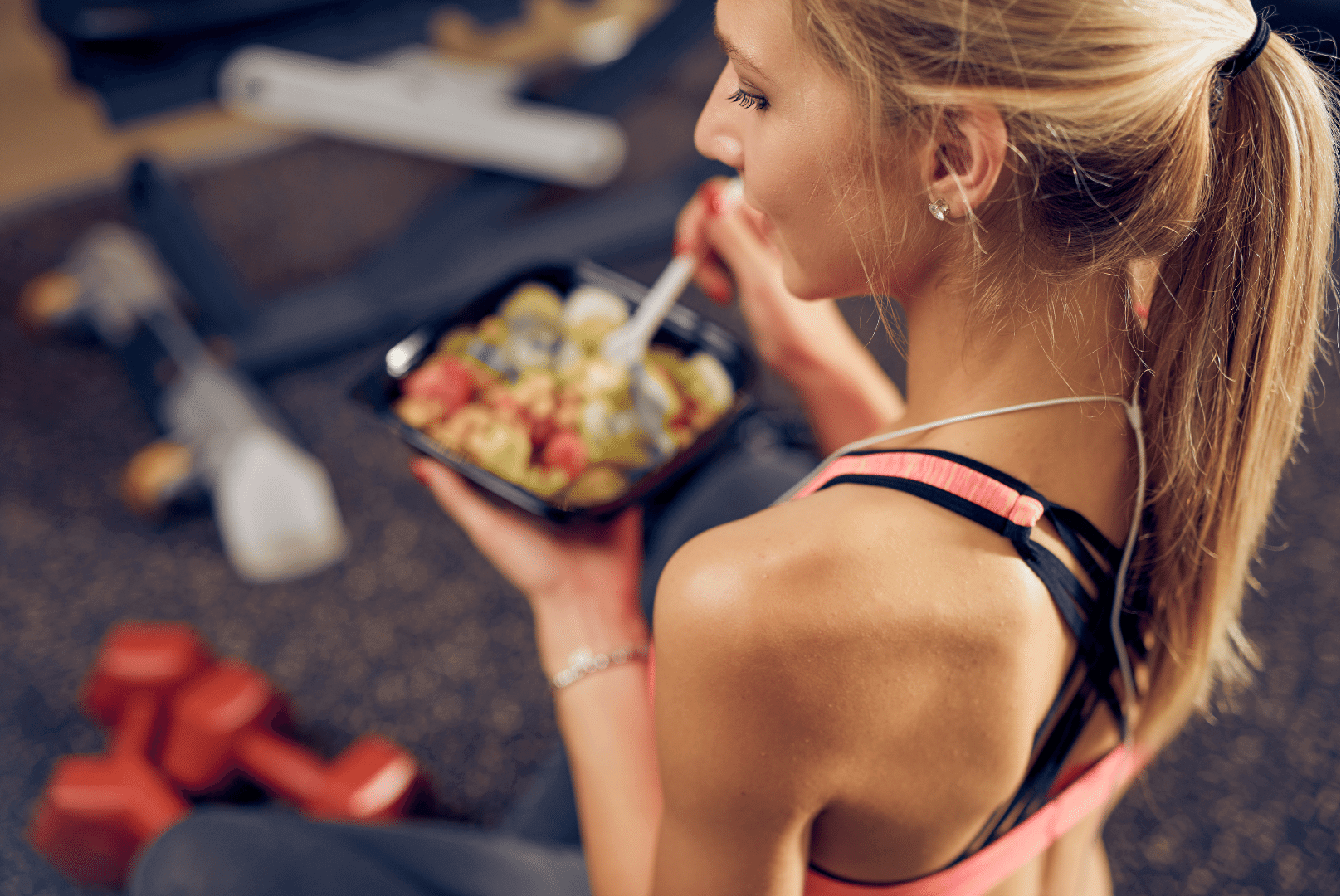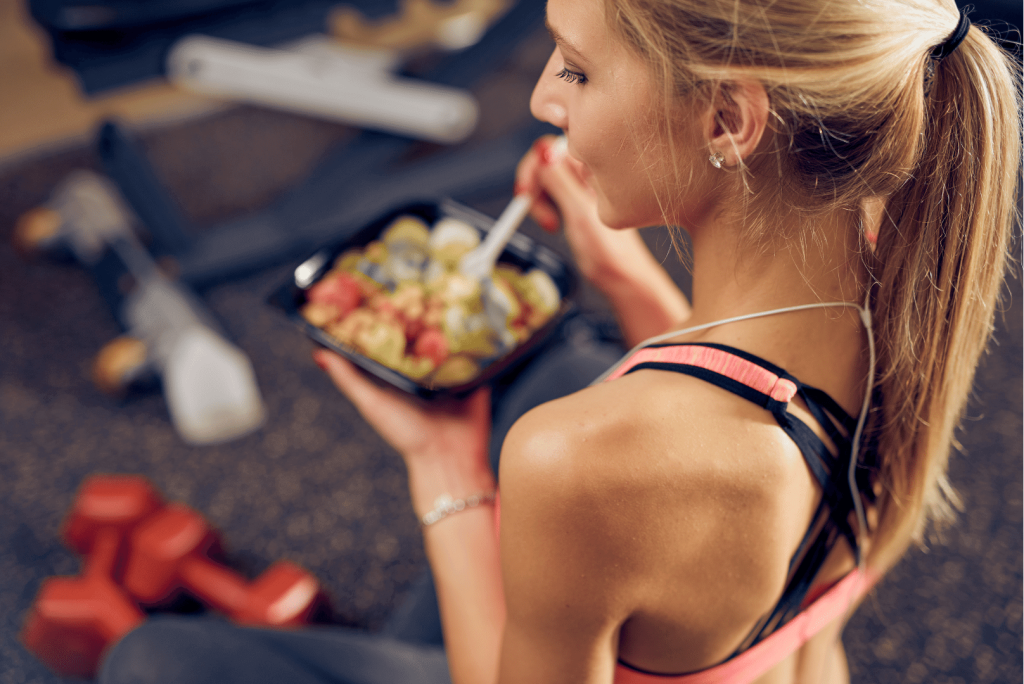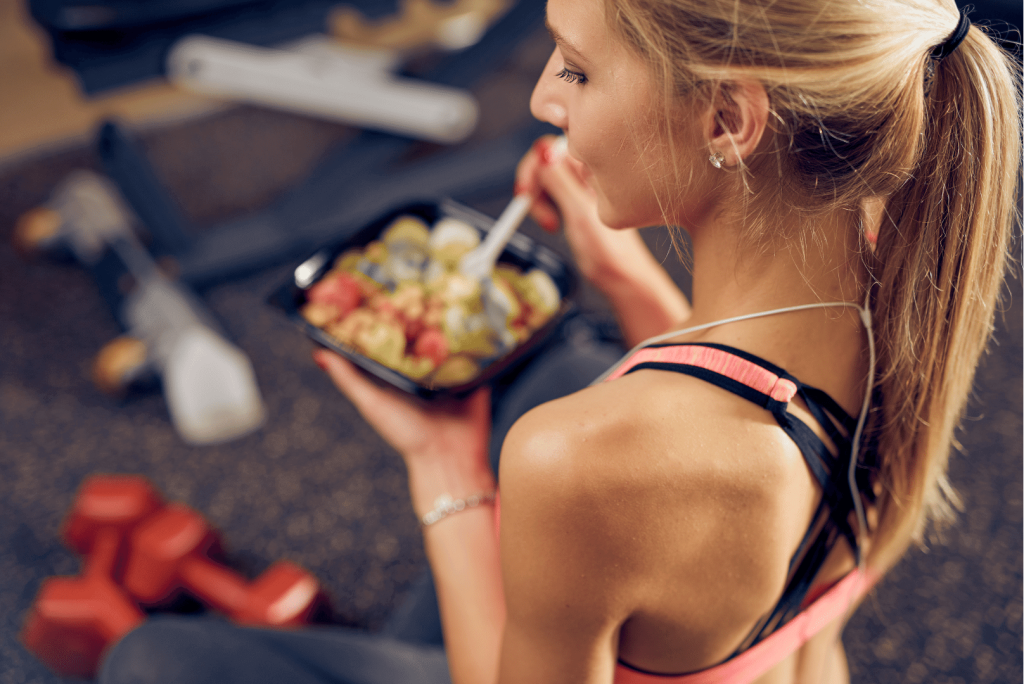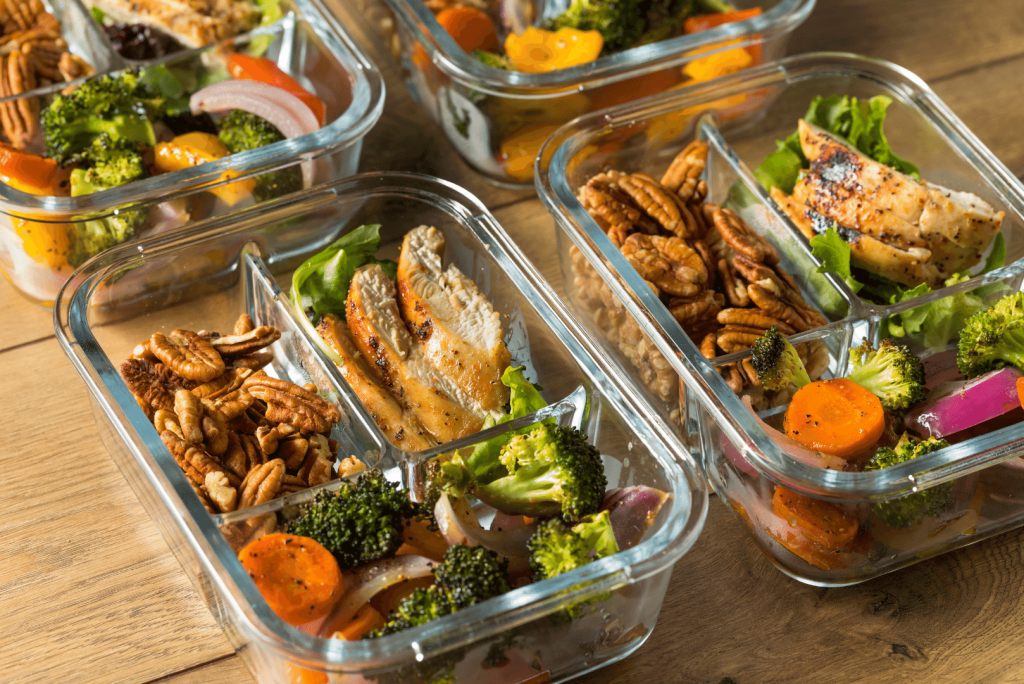
Why Eating The Same Meals Every Week Could Be Great For Your Nutrition Goals


Why Eating The Same Meals Every Week Could Be Great For Your Nutrition Goals
On the other hand, not sticking to the same meals can make it much harder to succeed. The more variety of foods you eat, the more cravings you will have and thus your odds of success drop significantly. The world’s elite physique competitors know this and eat a handful of perfectly calibrated meals. Almost every meal has the ideal amount of calories and macros. Most of them use meal prep and often eat the same meals for months or years. Wade lived this lifestyle for years. Why? Because it works.

All You Need Is 12 Winning Meals for Diet Success on Autopilot
The strategy: choose or create about a dozen winning meals. How do you create a winning meal?
- You enjoy the flavors.
- It satiates you.
- The calories are in the right range.
- The macros are in line with your diet type.
That’s it. You don’t need to figure out 100 meals. 50 meals. 20 meals. You just need 12.
The smallest unit of a diet is a MEAL. Ultimately if every meal you eat is a win, you will win the day. If each day is a win, you will win the week. If you win enough weeks, you will achieve your goals. The key is simply to create 12 WINNING MEALS.
To boil it down: select or create optimized meals that sound delicious and eat the right amount of it. That’s it.
High performance athletes like Shannon Sharpe have had the same breakfast for over 30 years, and he’s a physical specimen in his 50s. He removes the thinking from it and just does it, so it becomes easy.
The Paradox Of Choice
One of the reasons that the population as a whole is gaining weight is our environment—we have so many more choices and flavors available to us 24/7. So, a simple way to cut calories is to limit the variety of foods that you typically eat.
The more variety of food you eat, the more cravings are created. There’s little to no structure. No structure = low odds of success.
The less variety of food you eat, the more successful you will be because following the plan will be far easier. Portions will be incredibly easy to manage. You will actually start craving and enjoying the food you eat. Structure = high odds of success. The more structured your diet is, the less thinking you need to do and the more successful you’re going to be. This is true for your diet or training program.
The Novelty Seekers Antidote:
There is a part of your brain that seeks novelty. Some people who really love novelty (like Matt) tend to break mentally when they don’t get something new for an extended period of time. Here are two strategies that solve this.
Update The Winning Meals Once in a While
The 12 Winning Meals isn’t a prison sentence. When you get bored of a meal, CHANGE IT. It’s that simple. Swap out the meals you don’t enjoy with something new. Ideally, you’re not doing an entire diet overhaul unless the entire diet isn’t working for you. If that’s the case, then you’re probably not following the right type of diet to start with.
Every few weeks or months, feel free to rotate in a few new Winning Meals. Keeping your mind satisfied is vital for long term success.
Some people who get bored easily simply have more winning meals in their rotation. One of our clients has 80 different winning meals and a private chef to help prepare it. Interestingly, our client eventually simplified everything and went to the 12 Winning Meals strategy.
Create A “Window Of Freedom” Every Week Or Within Your Meals
This second strategy is great for people who do weekly refeeds. Matt’s strategy is to add some new restaurants or meals on refeed days, while staying on track with the calorie targets of course).
You’re Probably Already Kind Of Using The Simplest Secret
Most people aren’t conscious of this, but they are eating the same meals over and over again on rotation. Maybe it’s 12 meals, 15 meals or 20, sprinkled with a new restaurant once in a while. The difference is, you may not have used this winning strategy to achieve a nutrition goal.
When Matt and Wade grew up, their parents had about 15 meals on rotation. It’s a natural pattern.
6 Reasons Why You Should Use The Simplest Secret

1. Easy To Prepare Your Winning Meals And Have Them Ready
It’s exponentially easier to do meal prep when things are simpler and you’ve done it before. You know what to go buy and how much at the grocery store. You know how to prepare the meals. Once you’ve calculated portions and made a meal, it’s a lot easier the second time, third time, etc…
2. Easier To Eat Smaller Portions
This is perhaps the biggest reason to use this strategy. Studies have shown that if you eat less things with less variety, you will end up eating less. The more food and flavor variety you have, the more your cravings will go up and your odds of success will drop
There’s some fascinating experiments that have been done on this topic:
- In two separate studies, serving sandwiches with different fillings instead of just one kind of filling showed an increase in meal size
- Different pasta shapes led to a 14% enhancement of food intake when three different shapes were served compared to when the subjects’ favorite shape was served.
- In another study, yogurts differing in flavor, appearance, and texture were served and there was a 12.6% elevation of intake compared to the amount of the most preferred yogurt eaten.
- When subjects were given a four-course lunch consisting of either a varied meal with different foods, or a plain meal with the same foods, energy intake was elevated by 60% in the varied meal. This was primarily because of increased food consumption in the third and fourth courses.
- Another study showed that subjects ate more ice cream when they were offered three different kinds than when they were offered only one kind.
3. Easier To Reduce Portions
This is the next biggest reason to use this strategy. When you eat the same meals, it’s super simple to adjust portion size. Some examples:
- If you’re eating 6 eggs for lunch every day, just cut out 2 eggs and you’ve lowered your weekly calories by 1260.
- Let’s say you’re eating 1.5 cups of rice with your dinner. It’s easy to cut by half a cup (-600 calories for the week). Then another half a cup later (another -600 calories).
For people who are looking to build lean muscle and want to increase calories while minimizing fat gain, it’s the same thing. It’s very easy to incrementally add a bit more portions to increase to your target goal.
4. Reduces Decision Making

You want to ELIMINATE MAKING UNNECESSARY NEW DECISIONS. Why? Because there is always a potential “f@&k its” when we get tired and hungry. If you have to decide what to eat and use willpower multiple times a week, the odds of you blowing your diet and giving into temptations goes up BIG TIME.
If you know what you’re eating every meal of the week, you’re eliminating dozens of decisions a week. You only need to THINK ONCE. Think about your dozen winning meals ONCE and that’s it.
By removing the thinking and decision making on what to eat on a day to day basis, you’ll minimize decision fatigue and maximize your odds of success.
Whereas, if you have all your meals planned and figured out, then it just becomes a logistics game. Just follow the plan. Success will come much more easily. This cannot be over-emphasized.
Matt shares his experience when he made the shift, “When I just planned what I was going to eat and had my chef prepare it without having to change anything, it lowered my mental RAM significantly. I didn’t realize how much time and energy I was wasting thinking about what I was going to eat every day.”
Lowering your mental RAM being spent on useless things is one of the biggest wins in life. It opens up creative space in your mind to focus on other high value activities.
5. Reduced Cravings
We believe that your gut biome is one of the biggest drivers of specific food cravings. Matt has done “before and after” gut health tests going from keto to plant based. The bacteria changed. Bacteria have about a 48 hour lifecycle. This means that specific types of bacteria that thrive on certain foods die if you don’t feed them. Inversely, you create new colonies of bacteria when you start eating new foods.
Eating more variety of foods will feed a bigger variety of bacteria strains, which drives more cravings. However, once you stick to a set menu for a few weeks, your palate and microbiome will adapt to these foods and you’ll grow to like them.
A couple of decades ago, Matt was the hardcore keto zealot. Matt was open to trying something new so he asked Wade to design a meal plan. One of the core elements was a Big Ass Salad. Matt had never faced a salad like this before. The surprising thing was after a week, Matt found himself CRAVING the Big Ass Salad. This shocked him. How was this possible?
So here’s the takeaway: YOU WILL START CRAVING WHAT YOU EAT AFTER A FEW DAYS.
6. Eliminate Reactive Diet Destruction
Proactively plan and implement your strategy so that you have the food ready so you don’t raid the fridge or cupboard. Also, you should never go to a restaurant or supermarket when you are hungry.
When you meal plan, always have a few extra each week and bring it with you in case you get stuck in traffic or something else happens. You should have emergency compliant protein bars, shakes, nuts, or anything else that’s compliant to your plans everywhere to make it easier to stick to your plan. These “on the road snacks” are part of the “Winning Meals”. Protein bars that are in line with your macro and calorie parameters are a great solution.
Summary
The simplest secret of every successful dieter is this: eat the same things over and over again. Create a set of “winning meals” to meal prep and have on rotation that are compliant with your diet plan. This will allow you to eat on autopilot.
The more structured your diet is, the less thinking you need to do and the more successful you’re going to be. NOT THINKING ABOUT YOUR MEALS OR TRAINING PROGRAM IS VITAL FOR VICTORY.
All you need is 12 winning meals that:
- Have flavors you enjoy.
- Satiate you.
- Have calories in the right range.
- Have macros that are in line with your diet type.
The 12 Winning Meals aren’t permanent; if you get bored of a meal, CHANGE IT.
There are 6 main reasons why the simplest secret will work:
- It’s easy to prepare your winning meals and have them ready
- It’s easier to eat smaller portions
- It’s easier to reduce portions
- It reduces decision making
- It’ll reduce cravings
- It will eliminate reactive diet destruction
The less variety of food you eat, the more successful you will be because following the plan will be far easier. Portions will be incredibly easy to manage. You will actually start craving and enjoying the food you eat. It’s the champion’s secret.
References
- Sørensen LB, Møller P, Flint A, Martens M, Raben A. Effect of sensory perception of foods on appetite and food intake: a review of studies on humans. Int J Obes Relat Metab Disord. 2003;27(10):1152-1166. doi:10.1038/sj.ijo.0802391
- Bellisle F, Le Magnen J. The analysis of human feeding patterns: the edogram. Appetite. 1980;1(2):141-150. doi:10.1016/s0195-6663(80)80018-3
- Rolls BJ, Rowe EA, Rolls ET, Kingston B, Megson A, Gunary R. Variety in a meal enhances food intake in man. Physiol Behav. 1981;26(2):215-221. doi:10.1016/0031-9384(81)90014-7
- Rolls BJ, Rowe EA, Rolls ET. How sensory properties of foods affect human feeding behavior. Physiol Behav. 1982;29(3):409-417. doi:10.1016/0031-9384(82)90259-1
- Rolls BJ, Van Duijvenvoorde PM, Rolls ET. Pleasantness changes and food intake in a varied four-course meal. Appetite. 1984;5(4):337-348. doi:10.1016/s0195-6663(84)80006-9
- Berry SL, Beatty WW, Klesges RC. Sensory and social influences on ice cream consumption by males and females in a laboratory setting. Appetite. 1985;6(1):41-45. doi:10.1016/s0195-6663(85)80049-0
- Alcock J, Maley CC, Aktipis CA. Is eating behavior manipulated by the gastrointestinal microbiota? Evolutionary pressures and potential mechanisms: Prospects & Overviews. Bioessays. 2014;36(10):940-949. doi:10.1002/bies.201400071
